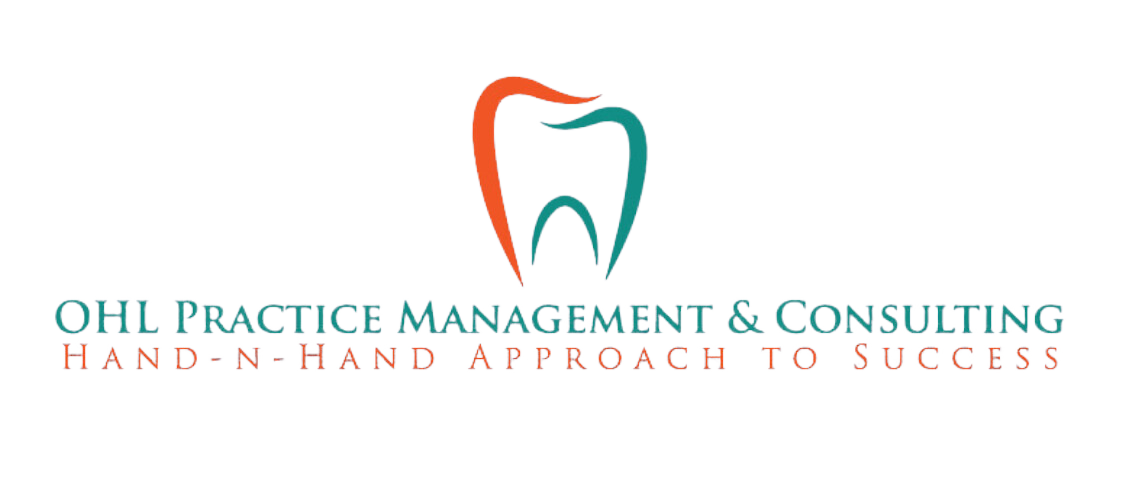Dental sleep devices provide a critical option for managing Obstructive Sleep Apnea, addressing barriers faced with CPAP therapy. They are distinguished primarily by their form, function, and patient experience.
Firstly, the form of dental sleep devices like MADs is compact and less intrusive than traditional CPAP machines. Their design allows for ease of use, making them an ideal choice for patients looking for simplicity and discretion in managing their sleep apnea.
Functionally, MADs are effective because they reposition the lower jaw and tongue to maintain an open airway during sleep. This mechanical action can markedly reduce the number of apnea episodes, directly improving the quality of sleep and the associated health risks of untreated OSA.
Lastly, the patient experience with MADs is often more favorable compared to traditional therapies. They are custom-fitted, which not only aids in comfort but also promotes regular, continuous use. Consistency in wearing these devices is linked to their effectiveness in managing symptoms of sleep apnea, a testament to their practicality as a long-term solution.
Exploring the Types of Dental Sleep Devices
Dental sleep devices are a cornerstone in the treatment of Obstructive Sleep Apnea (OSA), providing alternative solutions where CPAP devices may not suffice. These devices fall into three main categories: mandibular advancement devices (MADs), tongue retaining devices (TRDs), and custom-fit appliances, each serving unique patient requirements.
Mandibular advancement devices are the front runners in dental-based OSA treatment. They work by gently moving the lower jaw forward, which in turn keeps the airway open during sleep. This method is not only effective but also offers the luxury of customization; an advantage for those seeking personalized treatment. Users often appreciate the subtle design of MADs which leads to improved comfort and compliance over time.
Tongue retaining devices offer an alternative for patients who may not find relief with MADs. These devices hold the tongue in a forward position to prevent airway blockage. While not as widely used as MADs, TRDs provide an essential option for patients with specific oral anatomies or those who have found other treatments uncomfortable.
Finally, custom-fit appliances cater to those with distinct dental needs that off-the-shelf devices cannot accommodate. Designed from detailed dental impressions, these bespoke devices ensure maximum effectiveness and comfort, making them ideal for individuals with uncommon jaw structures or severe cases of OSA.
Defining OSA and Dental Sleep Devices’ Impact
Obstructive Sleep Apnea (OSA) is a condition that has profound implications on health and quality of life. Dental sleep devices such as MADs bring forth quantifiable benefits, targeting the condition’s core disruptions.
OSA is known for its signature snore, but the implications run deeper, increasing the risk of heart-related conditions and impacting cognitive function. Consistent interruptions in sleep can lead to tiredness and strain on the body’s systems. This poses a serious concern for overall health, one that dental sleep devices are designed to mitigate.
MADs, distinct from CPAP machines, provide standalone treatment for OSA. By repositioning the jaw to keep airways open, they alleviate the blockages that cause apnea episodes. This direct approach is not an adjunct but an alternative, suitable for those seeking solutions beyond CPAP therapy.
In addition to being an alternative treatment path, MADs contribute to patient well-being. Due to their design and mode of action, they often lead to better sleep and, consequently, a better sense of health. Their role in improving life quality for OSA sufferers is a testament to their impact within dental sleep medicine.
Dental Sleep Devices Available for OSA
Dental sleep devices are custom-fit to tackle the varied needs of OSA patients. Their design takes into account individual dental anatomy and specific health objectives, ensuring a personalized approach to treatment.
Mandibular Advancement Devices (MADs) represent the forefront of customizable OSA treatment. By allowing patients to adjust the degree of jaw advancement, MADs cater to personal comfort and the severity of apnea episodes. This individualized adjustability is key to effective treatment, as it can be fine-tuned to each patient’s unique requirements.
In cases where MADs are unsuitable or preferentially avoided, Tongue Retaining Devices (TRDs) present a valuable alternative. These devices work by holding the tongue in place to prevent the airway obstruction that triggers apnea. TRDs are especially beneficial for patients with specific oral structures that limit the use of MADs.
Addressing the full spectrum of patient needs, custom-fit devices are available for those with distinct dental profiles or particularly challenging treatment goals. These appliances are designed from detailed dental impressions to provide a precise fit, offering targeted relief for OSA symptoms and a more comfortable experience for the patient.
How MADs Compare to Other OSA Appliances
Mandibular advancement devices (MADs) distinguish themselves from other OSA treatments through enhanced comfort, effectiveness, and customization potential, offering a preferable option for many sufferers of sleep apnea.
When it comes to comfort, MADs are designed with the user’s ease in mind. Unlike “boil-and-bite” devices that may be ill-fitting and cumbersome, MADs often feature a more sophisticated fabrication that conforms closely to the patient’s mouth. This tailored fit not only minimizes discomfort but also reduces the risk of the device being dislodged during sleep — a common complaint that can interrupt therapy.
Effectiveness is another pivotal area where MADs excel. By mechanically advancing the lower jaw to prevent airway collapse, they directly target the anatomical cause of apnea episodes. Patients using MADs typically report a notable reduction in nighttime disruptions, which translates into improved sleep quality and oxygenation during the night.
Lastly, MADs offer a significant degree of personalization not found in many other sleep apnea treatments. With the ability to adjust the protrusion of the jaw, users can alter their MADs as needed to find the perfect balance between comfort and airway support. This customization capability allows for refined treatment precision, leading to higher patient satisfaction and treatment adherence over time.

Extended Benefits of Using Dental Sleep Devices
Dental sleep devices offer a multitude of benefits beyond the primary treatment of Obstructive Sleep Apnea (OSA). These advantages span across cardiac and cognitive health and even extend to the wellbeing of partners, highlighting the devices’ all-encompassing impact on health.
Cardiac health is a major concern among OSA patients. The continuous use of dental sleep devices aids in maintaining stable oxygen levels throughout the night, which can substantially reduce the stress on the heart. This lessens the risk of long-term heart conditions often associated with untreated sleep apnea, thus showing the devices’ protective benefit to heart health.
Clear thinking and memory retention are essential cognitive functions that OSA can negatively affect due to disrupted sleep patterns. Dental sleep devices contribute to cognitive wellbeing by enabling a more restful and uninterrupted night’s sleep, potentially improving focus and memory retention, and helping maintain overall cognitive health.
Additionally, these devices can be a boon for partners of OSA patients, who often suffer from poor sleep due to loud snoring and concern for their partner’s health. With the reduction in noise and apnea episodes provided by the devices, both the patient and the partner may enjoy better sleep quality and stronger relationship satisfaction due to fewer sleep disturbances.
The Proven Effectiveness of Dental Sleep Devices Over Time
Mandibular advancement devices (MADs) are not just a temporary fix; research consistently upholds their long-term effectiveness in managing Obstructive Sleep Apnea (OSA) symptoms. These devices are recognized for their lasting impact, cost-efficiency, and health benefits, particularly for less severe OSA.
The sustained success of MADs is evident in numerous continuous studies that underscore their capacity to manage the sleep disorder over extensive periods. Unlike short-term solutions that may lose effectiveness or become less comfortable with time, MADs maintain a consistent level of symptom control, making them a reliable component in the long-term management of OSA.
MADs also present a cost-effective alternative to more expensive treatments. Their durability and the ability to adjust them without frequent replacements make MADs a sensible choice for patients who are conscious of long-term healthcare expenses. This affordability contributes to their appeal across a broad range of socioeconomic demographics.
Aside from cost and consistency, the health enhancements attributed to long-term use of MADs cannot be overstated. The devices not only provide immediate symptom relief but are also associated with broader health benefits, such as reduced risks of cardiovascular disease and improved daytime alertness due to better-quality sleep. This comprehensive health advantage solidifies the role of MADs in ongoing OSA therapy.
Selecting and Working with Specialists for Your Dental Sleep Device
Identifying the ideal dental sleep device for Obstructive Sleep Apnea (OSA) management is a nuanced process, dependent on a professional understanding of individual characteristics. This includes aspects such as unique sleep behaviors, oral health conditions, and specific anatomical features.
One crucial factor in selecting a dental sleep device is the analysis of individual sleep patterns. A specialist at Ohl Practice Management & Consulting could assess factors like the severity of snoring or the frequency of nighttime awakenings to determine the most suitable device type. This personalized consideration ensures that the device aligns with each person’s distinct sleeping habits for maximum efficacy.
Next is the evaluation of dental health. An expert’s assessment can detect any pre-existing dental conditions that might influence the choice of the device or require additional adjustments for proper fit. This could range from considering the strength of a patient’s teeth to how a device might affect existing dental work, such as crowns or bridges.
Anatomy is the third essential element in the decision-making process. The size and shape of one’s jaw, mouth, and airway play a significant role in determining which device will offer the most comfort and effectiveness. It is the detailed understanding of these physical nuances that allows professionals to customize devices to an individual’s specific needs, ensuring both comfort and ideal treatment outcomes.
Conclusion
Ohl Practice Management & Consulting is committed to advancing the practice of dental sleep medicine by integrating state-of-the-art technology with comprehensive expertise. Our approach to treating Obstructive Sleep Apnea (OSA) revolves around mandibular advancement devices (MADs) and customized patient care, with an aim to fundamentally improve both sleep and overall life quality.
Our use of cutting-edge technology allows for more precise diagnosis and treatment of OSA. This ensures that every device is optimally configured to meet the specific needs of the patient, enhancing the effectiveness of the treatment. By staying at the forefront of technological advancements, we provide patients with modern solutions that contribute to more restful sleep and better health.
Expertise is central to our practice. The depth of knowledge possessed by our specialists in dental sleep medicine enables us to craft treatment plans that address the complexities of OSA. Our understanding of the condition’s nuances means that care is always tailored to the individual, leading to more successful outcomes and heightened patient satisfaction.
Finally, our holistic promise extends beyond the clinical aspects of OSA. We focus on the overall enhancement of life quality, recognizing that improved sleep affects everything from mental clarity and emotional balance to physical vitality. It’s not just about managing a medical condition; it’s about empowering our patients to live their best lives.
Don’t let uncertainty hold you back. Schedule a consultation today and start building a thriving dental sleep practice with Ohl Consulting!
Ohl Practice Management & Consulting
connect@ohlpracticeconsulting.com
Frequently Asked Questions
Are dental sleep devices comfortable to use?
Yes, devices like MADs are customized for comfort, enhancing long-term use and effectiveness in managing OSA symptoms.
Can MADs be as effective as CPAP machines?
Mandibular advancement devices (MADs) offer a significant improvement in sleep quality for many OSA patients, with some finding them even more effective due to higher compliance rates compared to CPAP.
Will I need to use a dental device forever?
The duration of use varies per individual needs. Many find lasting relief with consistent use, while others may use them as part of a broader treatment strategy.





